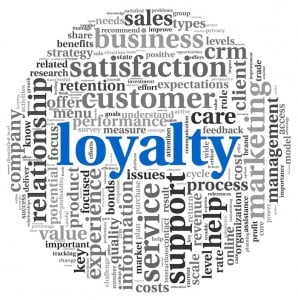Do you ever feel like advertising is manipulating your brain? That your decisions are not your own?

Your instinct is not far from the truth.
Consider this ad from 2007:
This silly commercial that has very little to do with dairy milk increased sales of Cadbury milk by 9%, increased favorability of the brand by 20%, and is credited for lifting sales across the brand’s entire product line.
How could a commercial featuring a drumming gorilla be responsible for a boost in sales on this level?
It seduced the subconscious minds of consumers.
By combining music, visuals that required a low amount of attention from viewers, and an emotional hook (fun and the desire for freedom), the ad was processed by the subconscious minds of the viewers and eventually changed their buying behaviors -- all without them knowing.
To understand how brands are able to seduce their audiences, you first need to understand how our minds work and why some ads are so effective at changing behavior. Robert Heath, author of Seducing the Subconscious, explains exactly how this manipulation works in his book on the topic.
Beliefs vs. Attitudes: How They Influence Buying
Brands invest in advertising because they ultimately want to change buying behavior.
The rationale typically goes like this: A brand wants more men age 25 to 40 to buy its dishwashing liquid. To do this, it needs to promote a persuasive message that changes how the audience views its dishwashing soap. To get people to pay attention to its message and therefore change the beliefs the person has about its product, it needs to get the audience’s attention. It hires an agency to create an ad to deliver its persuasive message.
The hope is that the ad will gain the attention of a consumer who will then change his belief about the brand’s product due to the persuasiveness of the ad. The consumer will consider the message, the pros and cons, and the believability of the claims and will make the decision that this brand’s product is worth buying.
The problem is that changing beliefs is not enough.
Heath wrote:
Beliefs are those attributes we believe a brand possesses, attitudes are how we ourselves feel about the brand. The distinction is very important, because although beliefs can influence attitudes, they cannot influence behavior; only attitudes are able to do that.
To change buying behavior, you have to change the person’s attitude.
And to influence attitudes, you first have to understand how the brain processes information, how we store information in our memory, and how we learn -- or encode -- and retrieve information about brands.
The 2 Types of Attention
It’s logical to infer that to change beliefs -- and eventually attitudes -- you need to first persuade the person to believe in your product claims.
And it continues to be logical to assume that to persuade someone, you need to gain her attention. She needs to hear your message to be able to process and remember the information.
The problem is that this logic doesn’t apply to advertising.
Brand learning is different. We are exposed to thousands of pieces of information about brands every single day. If we processed all of this, we would collapse under the weight of the information. So we filter information by the level of attention we pay to it. Our brains naturally switch between two different types of attention.
Active Attention
Active attention requires cognitive focus and is hard to maintain over long periods of time. There is a high amount of active thinking involved in this type.
Passive Attention
Attention is low, and you may be distracted by other things happening around you. Your mind might be wandering, but you could easily focus on something or someone and therefore switch to an active attention level.
Attention isn’t an on-off switch. We unconsciously switch through different levels of attention all the time.
The 3 Types of Learning
Once advertisers grab your attention, they need you to learn their message.
The two types of attention -- active and passive -- relate to three types of learning.
Active Learning
In active learning, a person is using cognitive resources and is trying to relate the concept to various other things in her memory. She is making associations, categorizing related ideas, and trying to fully understand a concept.
We have to work hard to actively learn something, so we cannot maintain it for very long.
Passive Learning
Passive Learning is a weak form of learning. The person is not paying much attention, so few cognitive resources are employed. An example of this might be when you’re listening to a song without really paying attention to it. You could be jolted into active learning if you hear a familiar name mentioned and want to know what the song says.
Implicit Learning
Implicit learning is when your mind is processing information without you actively thinking about it; it’s continuously done without your attention.
Implicit learning is interesting in that we do this type of learning without paying any attention, but we can eventually attach meaning to the ideas.
With your marketing cap on, you might think that the most desirable state of a consumer would be someone who is paying active attention and is processing the information through active learning.
In fact, high attention and active learning levels can be the most detrimental to your seduction attempt. When we employ active attention and active learning, we can also easily employ reasoning. We can argue that the product claims are false, that there is some “catch,” that the ad is ridiculous or scandalous or offensive, or that the claims we have heard from other brands are more appealing.
Basically, our defenses -- our ability to prevent brands from seducing us -- are more alert.
How Learning Is Stored
So marketing to people who are actively paying attention and actively learning is a fairly useless pursuit. Why create ads at all then? Why try to reach people who are not paying attention?
Just because people are ignoring your message doesn't mean they aren't absorbing the information. We need to understand how memories influence beliefs and attitudes, the latter which changes behavior.
Short-Term memory can only hold between five and nine items. It’s extremely limited. It houses working memory, which supports short-term memory and helps to expand its limit. It’s basically a temporary storage vessel. Information in working memory can eventually be encoded -- or stored -- in your long-term memory.
Long-Term memory stores information that can be recalled upon demand. Knowledge about how to perform physical tasks are also stored here. There are a few different types of long-term memory:
- Explicit memory is where conscious recollection happens.
- Procedural memory provides us with knowledge we need to perform tasks. This information can also be learned implicitly.
- Declarative memory holds facts, information, and experiences in two different sub-memory systems:
- Semantic memory is where information about rules, references, and meanings that do not have a time reference are stored. You know that you should or shouldn’t do something, but you don’t remember how you learned this information. Our semantic memory system includes conceptual memory, which houses meanings.
- Episodic memory is where we store memories of specific events and experiences we’ve lived through. This requires deep encoding.
- Implicit memory is our unconscious system. It holds automatic learnings -- how we “do” things that we can’t necessarily explain in words, such as breathing. Our implicit memory system holds more than the explicit memory system, and it is more durable, meaning you are less likely to forget.

This overview of the different memory systems and types of learning and attention provide us with a few important ideas:
- Active attention paired with active learning can create a response where instead of the viewer encoding the memory of the ad, he argues against the claims and disregards the product because it does not pass his reasoning test.
- Implicit learning is done unconsciously, meaning we are constantly learning things implicitly, but we don’t exert any cognitive resources by thinking about these things.
- Information that we implicitly learn and store in our implicit memory can be connected to concepts or meanings.
- The implicit memory system is larger and more durable than other memory systems.
Which leads us to the question: If we pay passive attention to an ad, can it enter our implicit memory and can we eventually attached meanings to these ideas?
Heath emphasizes these concepts:
We have identified a way in which subconscious inattentive implicit learning, which connects with implicit memory, can store not just perceptions, but also meaning in our brain. We have, in effect, found a mental mechanism by which advertising might be able to influence us without our having any idea that it has done so.
The key to advertising messages entering our subconscious and influencing us lies in how we emotionally respond to advertising.
How Emotions Are Processed
We cannot control our emotional response, even though we might be able to control how we respond to it, i.e., our facial expressions, whether we laugh or cry, etc. “Feelings are a response to emotion, and emotion always comes first,” Heath wrote.
Emotions are first processed subconsciously, and then move into conscious evaluation. This is because emotional responses are a biological response. Our bodies are hardwired to protect us from pain and discomfort, and this is just another biological response that can jumpstart our reaction before we even realize what is going on.
It goes like this: The emotion occurs. Then, it is brought into consciousness. This is when a feeling is created, such as happiness, relaxation, impatience, or sadness.
You might have an initial moment of shock where your heart rate increases -- a friend jumps from behind a door and screams -- but once you are aware of what is going on, you begin to counter-argue those feelings and reduce their impact.
“We are more vulnerable when we are only vaguely aware that our emotions are being influenced, and most vulnerable when we have no idea at all that our emotions are being influenced,” Heath wrote.
How Emotional Ads Enter Our Subconscious
Most people believe that emotion increases arousal and therefore attention. And there have been studies to support this. Werner Kroeber-Riel, a professor at the University of Saarland, performed experiments in 1970s and ‘80s that found higher emotive content in an ad lead to higher arousal resulting in higher attention.
The problem is that Kroeber-Riel used semi-nude and erotic pictures to embellish his stimuli, and brands can’t use nudes in ads (though Carl’s Jr. got close).
Other studies have shown that shocking events can increase recall of the event, and a face expressing fear increases perception. But brands don't want their companies to associate their products with shock or fear or sadness. Most branded content uses positive, not negative, emotional content.
In addition, most studies on attention don’t apply to advertising because the way we view ads is different.
Heath explains:
When processing lacks any motivation or goal it becomes free (i.e., stimulus-driven) viewing. This has been shown to be associated with lower levels of attention than goal-directed viewing. So, unless you work in the ad industry, the way you process advertising -- particularly TV advertising -- is quite likely to lack motivation and be stimulus-driven 'free' processing.
When the author conducted his own experiment, he replicated real-life TV viewing situations, and used six high-emotive and low-emotive advertisements.
He found that: “The experiment showed that high levels of emotive content were associated with an average reduction of about 20% in attention levels. In other words, the general assumption that emotive content increases attention towards TV advertising simply isn’t true. If anything, as psychology theory predicts, it reduces it.”
Creative content -- or emotive content -- is paid less attention.
Therefore, we are less likely to argue against the claims of the ad or filter out the messaging or images, and it is more likely that the ad will be processes by our implicit memory system.
Now consider that an emotional, low attention ad is seen by a person 30 or 40 times. You outright watch the ad in its entirety on a commercial break, it plays while you are running at the gym, it’s a blip as you pass by the living room to the kitchen, and its audio version plays in your car while you are talking on the phone.
Each time you’re subjected to the ad you’re having a subconscious emotional reaction that begins a process known as conditioning. Music or imagery from the ad has conditioned an emotional response from your body. Maybe it’s not strong enough to bring the feeling to consciousness, but your biological self does respond. This emotion may even spark a feeling. This occurs over and over again. Eventually, whenever you see the brand, your biological self associates a conditioned feeling with the brand -- all without needing the ad to stimulate the response.
Emotion also holds another key to changing buying behavior. It drives our decision-making process.
How Decision-Making Relies on Our Emotions
Emotions, according to researcher and neuroscientist Antonio Damasio, influence our decisions because of Somatic Markers. These are reactions by our body or mind and “have been connected, by learning, to predicted future outcomes in certain scenarios.”
We create these markers every day through experiencing reactions and outcomes, and they influence our emotive state. These markers can incentivize positive decisions and prevent negative choices.
An example of this might be when you open a 2-liter bottle of Coca-Cola or a bottle of champagne. We instinctively hold our heads back, feel a slight bit of apprehension, and open the bottles slowly because in the past, we’ve experienced getting drenched in a sugary liquid.
Damasio also found that during the decision-making process our emotions are activated. Then, previously formed Somatic Markers appear relating to past decisions and can influence the current decision. This is also known as a gut feeling. It can be seen when you have notions about brands -- that brand creates better quality products -- but you don’t have facts to reinforce this claim. This can cause us to be biased and begin reasoning for one result in a decision, even though our logic is flawed.
Somatic markers are especially influential when we lack time and need to make a decision. Think of yourself at a grocery store, for example, where time and decision-making come to a head.
Very few people think that grocery shopping is a relaxing, enjoyable experience to look forward to. It’s typically done in-between the other things in your life.
So when you’re at the store, you’re often rushed for time and yet, you have to make a lot decisions. Typically, instead of weighing all the pros and cons and researching the history of each product’s company and learning about the authenticity of its sustainability claims and all the other things needed for a rational decision on which brand of dishwashing liquid is better, you simply go with your “gut” feeling or the one you “like” most.
“When it comes to a purchase choice in which there is very little to choose between two brands, we will intuitively choose the one we favor,” Heath wrote. “And because we don’t remember how we formed the attitudes and markers that created this intuitive feeling, we can’t easily prevent it from influencing us.”
We like to think we make thoughtful, informed choices, but actually, we are relying on our emotions to make decisions.
You’ve Been Seduced -- Get Used to It
While it might seem like you’ve been manipulated, it’s actually your brain that is bending to the effects of advertising.
We pay little attention to ads and brand messages since they’re so prevalent. So brand messages are passively or implicitly learned and stored in our implicit memory, which can connect information to meanings and which has a large capacity.
In addition, we pay less attention to emotional content than persuasive content, so emotional content cannot be counter-argued against. And an emotion sparked by an ad can become a conditioned response after multiple viewings, so people eventually associate a feeling with a brand. Then, these emotions act as filters through which we make decisions.
Basically, emotions and the feelings associated with these emotions influence beliefs that, in turn, influence our attitudes -- the final step in changing our buying behavior to favor a certain brand.
This is exactly how the Cadbury ad was able to increase favorability and sales for both the category of product and the company. The ad requires little attention, so it was fed into the implicit memory system. It was framed by a song that evokes an emotional response in people, and it was widely distributed in the U.K. This led to the conditioning of an emotional response. Then, people went to purchase dairy milk and chocolate bars and cookies, and relied on their emotions to make a decision about which brand of milk and chocolate bars and cookies they wanted to buy. Ultimately, they chose the purple brand because they rationalized that the brand's milk is fair trade, and it invests in independently owned cocoa farms.
So people ignored an ad with a gorilla playing the drums, and this inattention led to them becoming consumers of the brand.
The Hope for Creativity
This is a scary concept, but it's also interesting from a creative standpoint.
Agencies tout their creative chops -- their ability to come up with brand-building ideas. But few are able to articulate and explain why what they do works, or doesn't. This means clients often dominate the conversation; they focus on data and ROI and gaining the attention of consumers.
By understanding the emotional impact of creative advertising and how attention-grabbing messaging affects our attitudes towards brands, agencies can take back control and create advertising that seduces and ultimately, sells.
Source: Seducing the Subconscious: The Psychology of Emotional Influence in Advertising
![Download Now: The State of U.S. Consumer Trends [Free Report]](https://no-cache.hubspot.com/cta/default/53/ebf9ec8e-a468-455a-943e-80aa4e6be694.png)


![28 Brands That Go By Different Names in Different Countries [Infographic]](https://blog.hubspot.com/hubfs/%5BAgency_Post%5D/Blog_Images/brand-names-different-countries.png)


